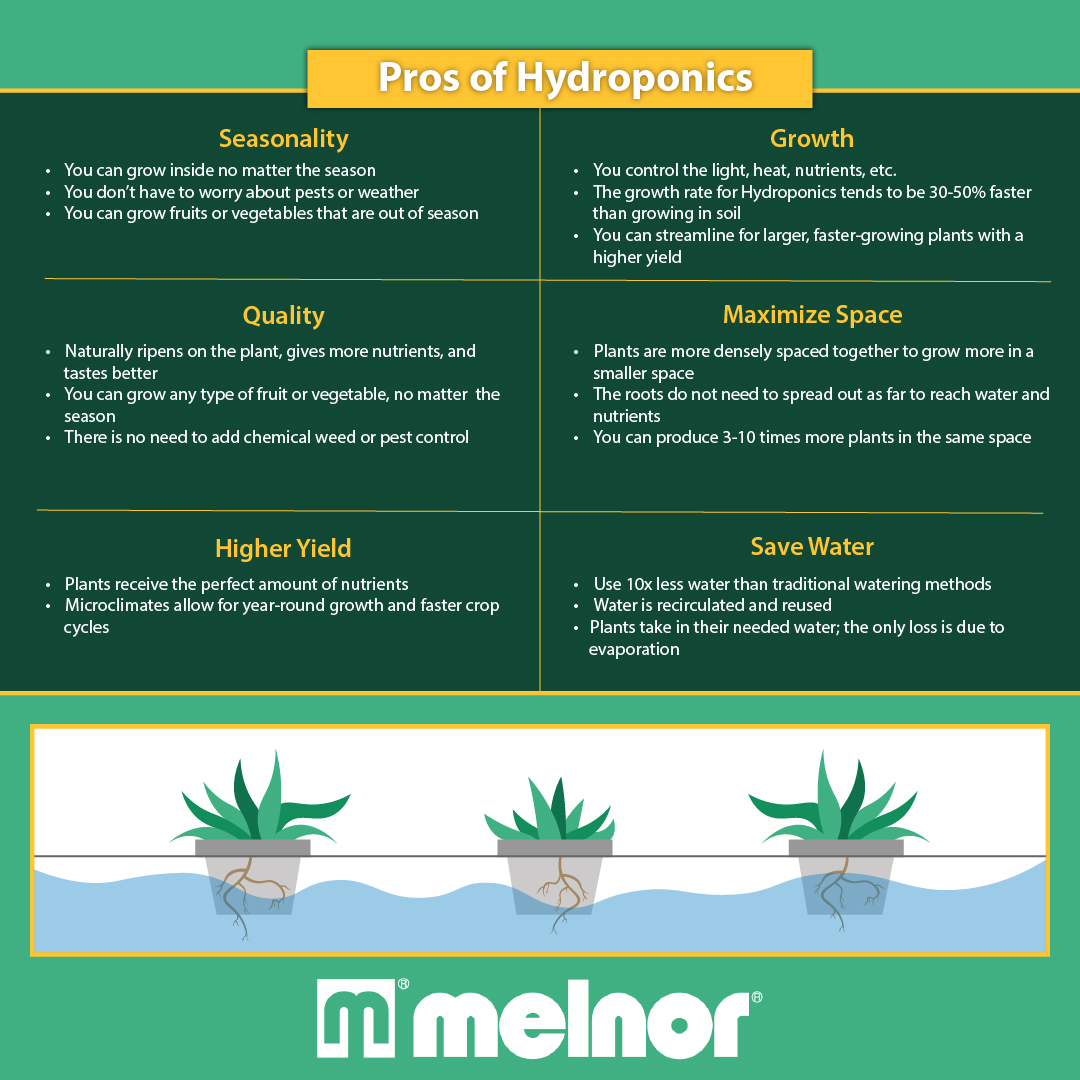Today’s climate change (droughts, floods, and extreme weather) makes it harder to grow food, creating food insecurity for billions globally. Is there a way to produce more nutrient-dense food, reduce reliance on pesticides, and have more sustainable food systems? In this article will talk about Hydroponics as one option.

What Is Hydroponics?
The basic concept of hydroponics is using water, nutrients, and light to grow food instead of soil. There are many advantages to growing fruits and vegetables in hydroponics versus in soil. There are 16 nutrients that plants require to grow. Three of them — carbon, hydrogen, and oxygen — are consumed through air and water exchange.
According to an article in the Food Revolution Network, “The rest of the nutrients and growth hormones are designed to mimic traditional soil-based systems. The nutrients are dissolved in water that circulates around the plant’s roots.”
Pros of Hydroponics
Seasonality
- You can grow inside no matter the season
- You don’t have to worry about pests
- You can grow fruits or vegetables that are out of season
- Weather isn’t a factor (no need to worry about drought, floods, fire, etc.)
Growth
- Nutrients absorb quicker
- You control the light, heat, nutrients, etc.
- The growth rate for Hydroponics tends to be 30-50% faster than growing in soil
- You can control the whole cycle can be streamlined for larger, faster-growing plants with a higher yield
Quality
- You can allow foods to ripen naturally (with traditional farming things are picked before they are ripe and allowed to ripen in warehouses)
- Food that naturally ripen on the plant, typically have more nutrients and taste better
- You can grow any type of fruit or vegetable no matter the season (you control the conditions) (I know we already said this, but it is a big factor!)
- There is no need to add chemical weed or pest control
Higher Yield
- Creating ideal conditions ensures plants receive the perfect amount of nutrients
- By creating the microclimates, you allow for year-round growth and faster crop cycles
Maximize Space
- You can grow more in a smaller space
- The roots do not need to spread out as far to reach water and nutrients (they are delivered directly to the roots
- The root system takes up less space, thus allowing for more plants in a smaller area
- Hydroponics tend to also stack vertically, allowing for more plants in a smaller area
- You can produce 3-10 times more in the same space
Save Water
- Plants grown in hydroponic systems use less water. Water is recirculated and reused
- Plants take in their needed water; the only loss is due to evaporation (which can be lessened by using a grow tent to control the climate) and leaks (checking your system often will ensure you don’t have leaks)
With more people embracing healthy lifestyles, there has been a surge in producing crops locally. Hydroponics systems can address this concern by aiding the production of healthy, organic, and local crops from the comfort of your home. Read our next blog article on what food you can grow using hydroponics.




